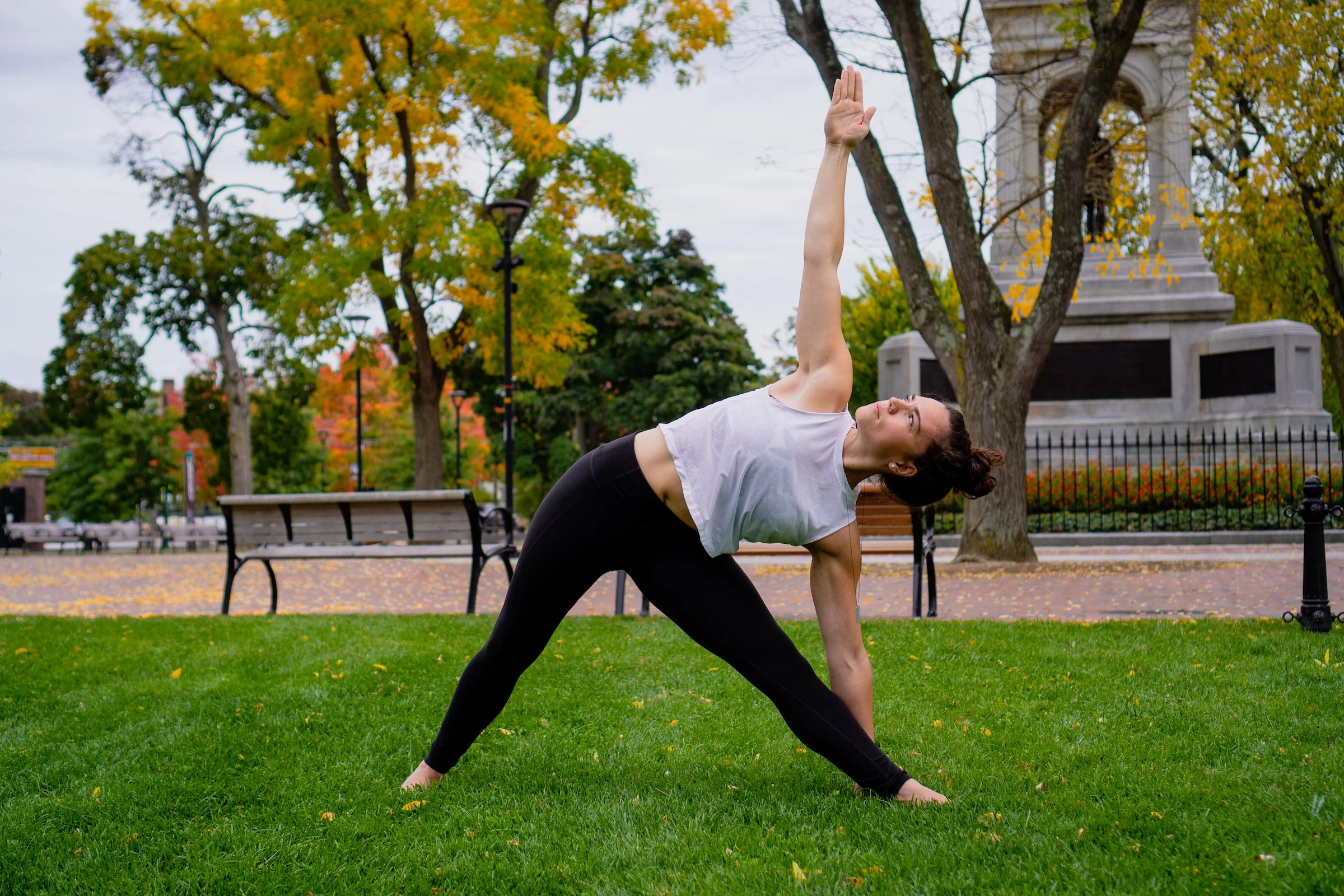On Technique & Practice
Triangle pose is a classic asana for exploring technique. But what exactly does technical work do for our practice?
I love exploring technique in practice. I find that it brings clarity and new perspective in any of the poses, and gives me a contained opportunity to step out of my comfort zone. So naturally, I love sharing technical work with my students.
Lately, that technique has revolved around exploring Mula Bandha and Uddiyana Bandha – the root and abdominal locks – and how they relate to breathing, posture, and a balance of being grounded and light at once.
After a recent class, one of my students commented that the work felt like the opposite of what she was used to. She was very familiar with softening the belly, breathing into space, and releasing tension. Our technical work in class (using the breath to engage the deep abdominals, pelvic floor, and hamstrings while moving through poses) was definitely different.
While she enjoyed the work and found it interesting, her observation hinted at an underlying question: What's the big deal about all of this technical stuff?
I could certainly dive into the nitty gritty on bandhas, breathwork, and strength training in the yoga room. After all, these are exercises I genuinely enjoy feeling in my own body and sharing with students. But I think the bigger question to be addressed is why we practice technique at all.
Why on some days do we move through fluid, groovy movement, and other days spend much of the class learning to activate one specific muscle group?
To me, it's all about building perspective, balance, and a clearer sense of reality.
This might sound lofty or mystical, but it's really quite simple: when we diversify our movement, we train ourselves to see the world through new eyes. We expand our perspective and build awareness.
Let's consider for a moment, triangle pose. When we always move in and out of the pose the same way, we form a pattern. And over time, that pattern becomes habitual.
If we incorporate a small change – say softening the knees or engaging the inner thighs – we break the pattern. Suddenly we're in an entirely new experience (and often uncomfortable) experience.
In those moments we might see the reality that our pattern wasn't the "right" or "wrong" way – it's simply the way we had always done it. And we might recognize that there are many ways to explore a yoga pose.
As often is the case, I see this example play out on and off the mat.
Diversifying our movement isn't just beneficial for a balanced practice; it reminds us that our lens on life is not the only lens.
In practice we learn to see that there is more than one way to exist, and there are always new perspectives to explore. And in doing so we work to keep a balanced, honest, and truthful understanding of ourselves and the world around us.
In the yoga room, sometimes we explore challenging and nuanced technique. Other times we explore intuitive, flowing movement. Both are necessary to step outside of ourselves and continue to grow.
